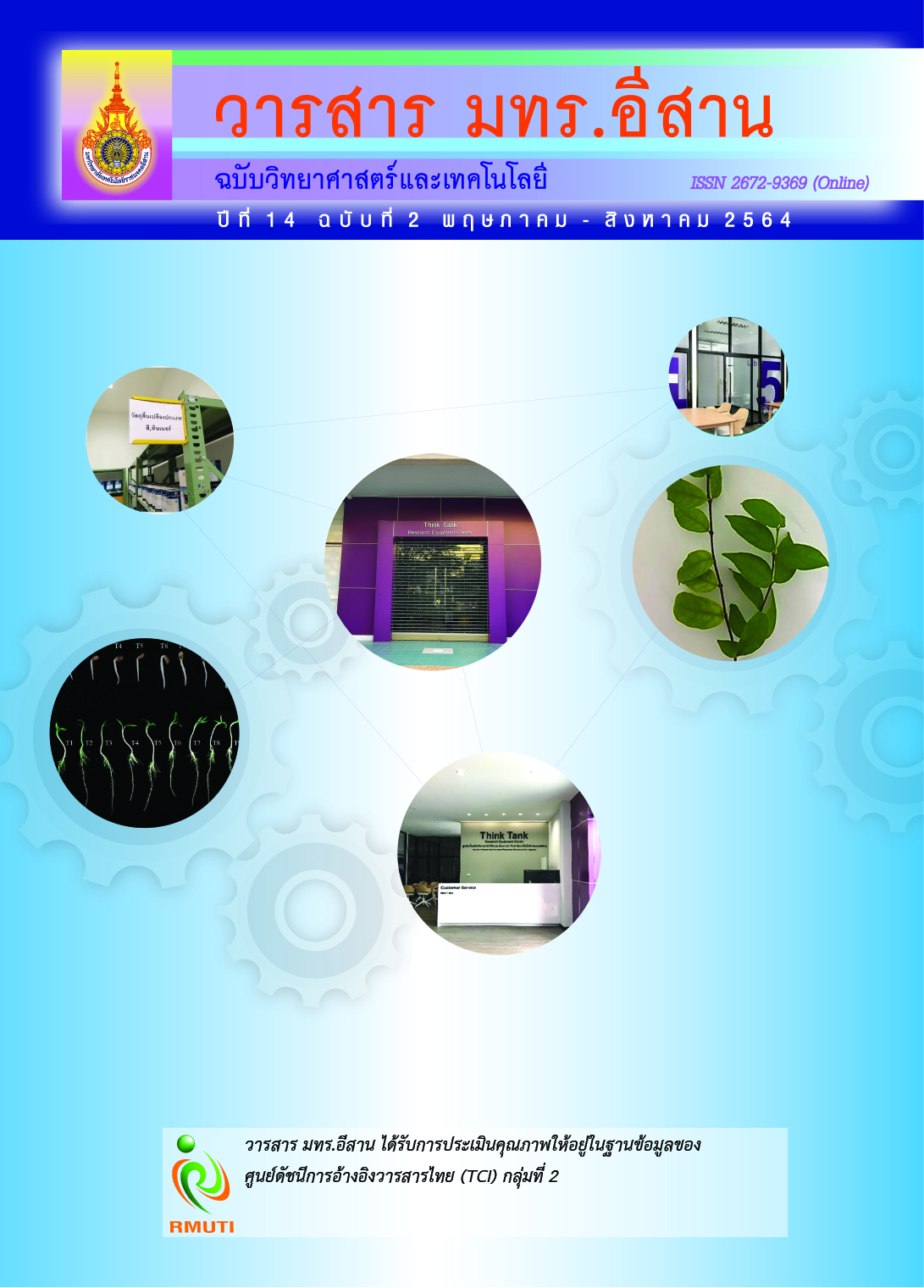Factor Selection for Improving Vocational Certificate Course Selection Model Performance using Wrapper Method
Main Article Content
Abstract
The objective of this research is to relevant select factors for improving of the vocational certificate program selection models of third secondary education students. In this research paper, data were collected from students who graduated with a vocational certificate from the Sarisongkram Industrial Technology College, Nakhon Phanom University. The data are from 2012 - 2018 academic year, total 926 records. Wrapper with the Random Tree and Support Vector Machines and Naive Bayes and were used to select the relevant factors. Technique Bagging technique, K-Nearest neighbors, Decision Tree C4.5 technique, Random Forest technique and Artificial Neural techniques were used to build the prediction models. In order to measure performance of factors, 10-fold cross validation was employed and measured with Accuracy, Sensitivity and Specifi city values. The experimental results showed that the wrapper method in combination with Random Tree was able to increase the accuracy of vocational certificate program selection model up to 89.13 %, sensitivity up to 75.86 % and specificity up to 92.86 %.
Article Details
References
Hand, D. J., and Adams, N. M. (2014). Data Mining. Wiley StatsRef: Statistics Reference Online. pp. 1-7. DOI: 10.1002/9781118445112.stat06466.pub2
Kladchuen, R. and Sanrach, C. (2018). An Efficiency Comparison of Algorithms and Feature Selection Methods to Predict the Learning Achievement of Vocational Students. RMUTT Research Journal Rajamangala University of Technology Thanyaburi. Vol. 17, Issue 1, pp. 1-10
Wanon, S. M., and Muangsan, R. (2020). A Study and Development of Forecasting Model for the Suitability Characteristics on the Applying Major Selection by Using Data Mining Techniques. Journal of Management Sciences Suratthani Rajabhat University. Vol. 7, No. 1, pp. 135-152
Kira, K. and Rendell, L. A. (1992). A Practical Approach to Feature Selection. Machine Learning Proceedings 1992. pp. 249-256. DOI: 10.1016/B978-1-55860-247-2.50037-1
Akarachantachote, N. (2016). Feature Selection for High-Dimensional Data in Classification. Research Methodology and Cognitive Science. Vol. 8, No. 2, October 2010 - March 2011. pp. 1-13
Witten, I. H. (2014). More Data Mining with Weka. MOOC Course Material, Department of Computer Science University of Waikato New Zealand
John, G. H., Kohavi, R., and Pfleger, K. (1994). Irrelevant Features and the Subset Selection Problem. Machine Learning Proceedings 1994. pp. 121-129. DOI: 10.1016/B978-1-55860-335-6.50023-4
Aldous, D. (1991). The Continuum Random Tree. I. The Annals of Probability. Vol. 19, No. 1, pp. 1-28
Pinmuang, N. and Thongkam, J. (2018). Classifying Thai Opinions on Online Media Using Text Mining. Journal of Science and Technology Mahasarakham University. Vol. 37, No. 3, pp. 372-379
Larose, D. T. and Larose, D. T. (2006). Data Mining Methods and Models. John Wiley & Sons, Inc., Hoboken, New Jersey
Breiman, L. (1996). Bagging Predictors. Machine Learning. Vol. 24, No. 2, pp. 123-140. DOI: 10.1023/A:1018054314350
Ertugrul, O. F. and Tagluk, M. E. (2017). A Novel Version of k Nearest Neighbor: Dependent Nearest Neighbor. Applied Soft Computing. Vol. 55, pp. 480-490. DOI: 10.1016/j.asoc.2017.02.020
Jankowski, D. and Jackowski, K. (2014). Evolutionary Algorithm for Decision Tree Induction. In: Saeed K., Snášel V. (eds). Computer Information Systems and Industrial Management. CISIM 2015. Lecture Notes in Computer Science, Vol. 8838. Springer, Berlin, Heidelberg. DOI: 10.1007/978-3-662-45237-0_4
Breiman, L. (2001). Random Forests. Machine learning. Vol. 45, No. 1, pp. 5-32. DOI: 10.1023/A:1010933404324
Yegnanarayana, B. (2009). Artificial Neural Networks. PHI Learning Pvt. Ltd.
Donrat, P. and Thongkam, J. (2018). The Comparison of Performance Models for Predicting Students Success in Vocation Education. Journal of Science and Technology Mahasarakham University. Vol. 37, No. 3, pp. 380-388
Baratloo, A., Hosseini, M., Negida, A., and1 El Ashal, G. (2015). Part 1: Simple Definition and Calculation of Accuracy, Sensitivity and Specificity. Emergency (Tehran, Iran). Vol. 3, No. 2, pp. 48-49
Wanon, S., Arreerard, T., and Sanrach, C. (2018). A Study of Techniques in Predicting Career Counseling for Undergraduate Students of the Computer Program by Using Data Mining Technique. Journal of Information Technology Management and Innovation. Vol. 5, No. 1, pp. 164-171


